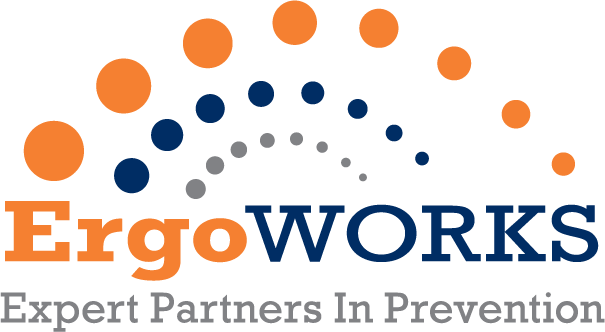Discover how physical demand analysis can effectively reduce injuries in the workplace and create a safer environment for employees.
Understanding the Importance of Injury Prevention
Injury prevention is a crucial aspect of maintaining a safe and productive work environment.When companies understand the importance of injury prevention, they will take proactive measures to reduce the risk to their employees. This not only ensures the safety and health of employees, but also increases productivity and reduces the costs associated with worker compensation claims and medical expenses.
An important first step is an active early reporting process. Early reporting of injuries by employees to their supervisors or managers is a part of a safety culture, and is the initial step of an investigation process. Employees are encouraged to communicate early signs of injury, such as soreness, discomfort, aches and pains. Managers who respond with curiosity and compassion with the employee's wellbeing as top priority gain the trust of their team. Early reporting can identify to the employer areas and tasks that require further investigation and physical demand analysis.
Implementing injury prevention strategies starts with recognizing the potential dangers and hazards that exist in the workplace. By identifying these risks, employers can develop targeted measures to mitigate them. This is where physical demand analysis plays a vital role.
Conducting a Physical Demand Analysis
A physical demand analysis involves assessing the physical requirements of various job tasks and activities. It helps employers gain a comprehensive understanding of the demands placed on employees' bodies and the potential risks associated with these tasks. By conducting a physical demand analysis, employers can identify areas where adjustments or modifications can be made to reduce the risk of injuries.
During a physical demand analysis, factors such as lifting, carrying, pushing, pulling, reaching, and repetitive motions are measured and evaluated. This analysis provides valuable insights into the ergonomic aspects of job tasks and helps in designing appropriate preventive measures. For example, changing tools or equipment, or even performing routine maintenance on them, can reduce the force an employee is required to exert.
Identifying High-Risk Tasks
Identifying high-risk tasks is an essential step in injury prevention. Through a physical demand analysis, employers can pinpoint job tasks that involve excessive physical strain or repetitive motions, which increase the risk of injuries. By identifying these high-risk tasks, employers can implement preventive measures and prioritize targeted tasks and work areas to reduce the risks.
High-risk tasks may include heavy lifting, prolonged standing or sitting, repetitive bending or twisting, and working at awkward positions. By addressing these tasks, employers can significantly reduce the occurrence of work-related injuries.
Implementing Preventive Measures
Once high-risk tasks have been identified, it is essential to implement preventive measures to reduce the likelihood of injuries. These measures can include engineering controls, administrative controls, and personal protective equipment (PPE). The OSHA Heirarch of Controls outlines best practices for implementing controls to protect workers.
Engineering controls involve modifying the work environment or equipment to eliminate or minimize hazards. This can include installing mechanical aids for lifting heavy objects, adjusting workstations for proper ergonomics, or implementing automated processes to reduce repetitive motions. The phrase "Engineer it Out" applies to situations were a physical demand can be reduced or eliminated by a change in equipment or tool. Engineering controls protect all the workers in that area who perfrom that task.
Administrative controls focus on changing work practices and procedures to reduce the risk of injuries. This can include implementing job rotation to minimize prolonged exposure to high-risk tasks, providing adequate training on proper lifting techniques, and enforcing regular breaks to prevent fatigue. Administrative controls protect most of the workers in that area who perform that task.
Personal protective equipment (PPE) should be provided to employees when hazards cannot be eliminated through engineering or administrative controls. This can include safety glasses, gloves, helmets, or ear protection. It is crucial to ensure that PPE is properly selected, maintained, and used by employees to maximize its effectiveness. PPE protects only one worker at a time, and therefore should be utilized only when other controls cannot be implemented.
Creating a Culture of Safety
Creating a culture of safety is essential for sustaining injury prevention efforts in the long term. This involves fostering an environment where early reporting of injuries is encouraged, safety is prioritized, and employees are actively engaged in identifying and addressing potential risks and their solutions.
To create a culture of safety, employers should encourage open communication regarding early signs of injury and safety concerns, provide regular safety training and education, and recognize and reward employees for their proactive efforts in promoting a safe work environment. By involving employees in the decision-making process and empowering them to actively participate in safety initiatives, employers can create a culture where safety becomes an integral part of the organizational values.
In conclusion, by understanding the importance of injury prevention, conducting a physical demand analysis, identifying high-risk tasks, implementing preventive measures, and creating a culture of safety, employers can effectively reduce injuries in the workplace. Prioritizing the well-being of employees and creating a safe environment not only benefits the individuals but also contributes to the overall success and productivity of the organization.


